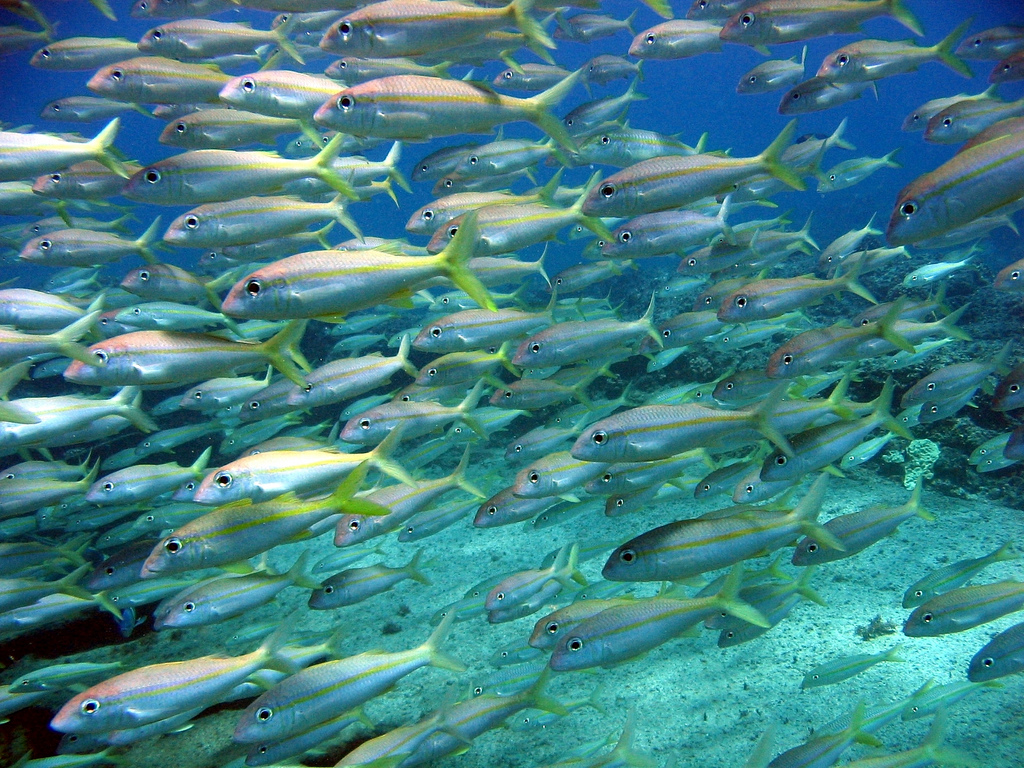In 1976, then-president Gerald Ford signed a bill he worried would look like an international power grab. It expanded the United States’ fishing territory nearly twentyfold, from 12 miles off the coast to 200, and paved the way for booting foreign fishing boats from those newly-claimed waters.
But his concerns over war on the high seas were largely unfounded: The Fishery Conservation and Management Act of 1976 didn’t lead to much international strife (perhaps in part because it was passed in the middle of a nine-year United Nations conference that wound up adopting the 200-mile rule for everyone). The act itself was strengthened and expanded over the years, ultimately becoming one of the most successful conservation policies in American history. And now it’s up for congressional reauthorization.
Like any good push for reauthorization, this one is full of obscure disagreements between lobbying groups you’ve never heard of (Recreational Fishing Alliance, anyone?). And looming over the whole process is an existential threat to the scientific research that made the legislation successful in the first place. We’ll get to that. But first, a little background.
Canary rockfish on the Pacific Coast were classified as “rebuilt” in 2015
The new act also established eight Regional Fishery Management Councils to regulate the fishing industry and set something called “optimum yield,” a catch limit metric that was supposed to reflect a balance of commercial and environmental interests. It also mandated that all fishery-related decisions be based on the “best scientific information available” (that term will become important when we get to the 2017 debate).
That 1976 law was successful in reducing foreign fishing. But overfishing in New England remained a problem—now, it was American boats that were catching more fish than was sustainable. The law was criticized for other reasons, too: enforcement was inconsistent among the eight fisheries, and the “optimum yield” metric was interpreted so broadly it didn’t really have any teeth.
In 2016, yelloweye rockfish in the Pacific were classified as “overfished”
Magnuson-Stevens turbocharged the 1976 legislation in several key ways. First, it changed the until-then-basically-meaningless definition of “optimum yield” to the definition we still use today: It is “prescribed on the basis of the maximum sustainable yield from the fishery, as reduced by any relevant social, economic, or ecological factor.” Second, the amendment mandated that we as a nation do more to care for our fisheries than passively stop overfishing them: Folded into the new legislation was a requirement that overfished stocks be rebuilt over time. Magnuson-Stevens also set a ten-year deadline for that replenishment process.
Just like the 1976 version, the 1996 update had its successes and failures. It succeeded in rebuilding some populations, like scallops in Georges Bank (the sea floor between Cape Cod, Massachusetts, and Cape Sable Island, Nova Scotia). But ten years came and went, overfishing continued, and the fully rebuilt fish stocks remained a receding goal post.
In 2014, butterfish stocks between the Gulf of Maine and Cape Hatteras were classified as “rebuilt”
By and large, the 1996 Magnuson-Stevens act and the 2007 update have been hugely successful. According to the National Oceanic and Atmospheric Administration (NOAA), 41 fish stocks have been rebuilt since the year 2000. Now, 84 percent of stocks are no longer overfished. “Today, Americans collectively enjoy the lowest number of overfished stocks in our history, and landings revenue is up 18 percent since 2005,” writes Shannon Carroll, deputy director of the Alaska Marine Conservation Council and a member of the Fishing Communities Coalition, in an op-ed for The Hill.
Which brings us to the present day. Magnuson-Stevens is up for reauthorization. It seems unlikely, given the current political climate, that Congress will again strengthen federal oversight and throw money at the agencies that enforce it. In fact, lobbying groups on Capitol Hill are urging the opposite: Recreational fishermen think the catch limits should get a little looser.
Coho salmon in the Strait of Juan de Fuca were classified as “rebuilt” in 2012
What that means, according to Jim Donofrio, executive director of the Recreational Fishing Alliance, is fixing what he says has been a raw deal for recreational fishermen since Day 1 of Magnuson-Stevens. “It’s been pretty much a nightmare for the recreational sector because the management is really tuned into the commercial sector,” he says. “Right now, we have tackle stores closing because we have these in-season closures. We have robust fish stocks that we can’t fish on, because the law triggers an artificial overfishing definition.”
Donofrio says he hopes the Modern Fish Act will amend the law so that recreational fisheries adhere to a three-year catch limit rather than annually adjusted regulations. The change would mean recreational companies could plan for the future and avoid mid-season fishery closures, imposed by regulators, that hurt their businesses. “If you set that for three years, nothing is going to collapse. No fishery is going to collapse if you set our fisheries based on sound science and data.”
But Donofrio also wants to challenge this “best scientific information available” metric that NOAA uses to establish annual catch limits. The Modern Fish Act includes a provision for “cooperative data collection,” which proposes that data from fishermen, universities, and research institutions be taken into account in fishery management decisions. “We need to work with NOAA, but we need to take the ownership away. They don’t want to work with anyone else. We need to have them partner with the states, with the university,” he says. “They hide behind the ‘best available science’ banner.”
Spiny dogfish stocks along the Atlantic Coast were classified as “rebuilt” in 2010
Carroll sees the Modern Fish Act as little more than an attempt by recreational fishermen to up their catch quotas. “I think the rec sector gets 51 percent of the fish in the Gulf of Mexico, but they want more,” he says. “So that’s what’s really driving this. They haven’t been entirely successful at the council level in trying to get reallocated more fish. So because of that, they’re sort of trying to drive these changes at the federal level, through the Magnuson Act.”
Here’s what it all boils down to: The “best scientific information available” works great for commercial fishermen in Alaska. But recreational fishermen in the Gulf of Mexico aren’t happy with the data that governs their fisheries. In the absence of abundant information, regulators are using a precautionary principle to regulate Gulf fishermen—which means recreational boats might see tons of fish in the water that they aren’t allowed to catch. So recreational fishermen think they should be regulated by a different set of rules: They want a three-year guarantee on how many fish they can catch, and they want to force NOAA to take additional data into account when it makes decisions about fishery management. At the same time, conservationists worry those changes will weaken the entire Magnuson-Stevens Act and its science-based catch limits in the service of a small subset of the industry.
Black sea bass were declared “rebuilt” on the Mid-Atlantic Coast in 2009
It all hinges (again) on the “best scientific information available.” The catch limits that have worked so well in Alaska are determined by dedicated, detailed observation. A lot of the time, that means hiring people and installing cameras on fishing boats to monitor everything that’s happening. “Funding for that has been stagnant or declining,” Carroll says. “In the Gulf of Alaska right now, it’s at very low levels, to the point where there’s concern about it being really sufficient. And then there’s concern about NOAA losing money for surveys and stock assessments, which are really the linchpin of good fisheries management.”
The success of Magnuson-Stevens rides on something deceptively simple: All we have to do is accurately count how many fish are in the sea. Recreational fishermen in the Gulf of Mexico say they only want looser regulations because they don’t believe the fish counts are accurate. Commercial fishermen in Alaska fear that catch limits will lose accuracy if the funding for monitoring fish stocks runs dry. Politics aside, Magnuson Stevens owes its massive success to little more than good fish-counting skills: Regulators have been able to rebuild stocks while allowing fishermen to continue to make money because they’ve landed on a balance that allows just enough fish to stay in the water.
Neither commercial nor recreational fishermen want a return to what Donofrio calls the “Wild West,” the days before Magnuson-Stevens regulated the catch. But they don’t agree on how to move forward: One camp says federal regulation has a proven track record of success, the other says it’s too rigid and restrictive. Turns out, the “best scientific information available” isn’t as black and white a concept as it seems.

















